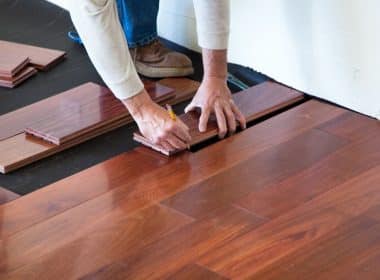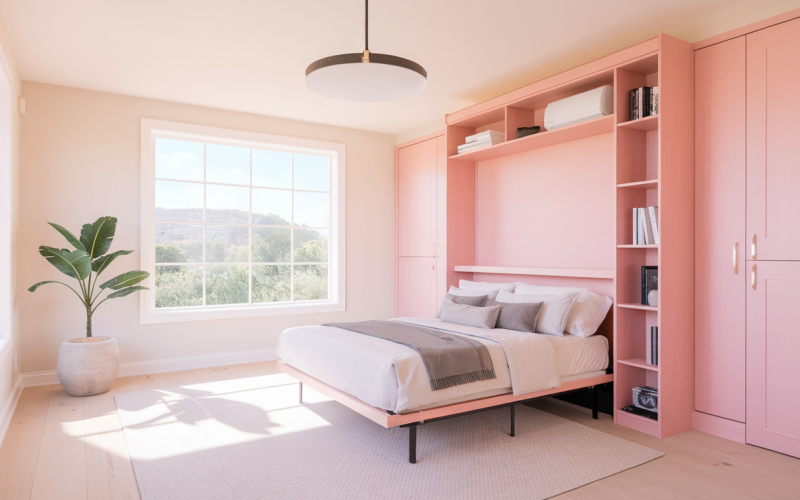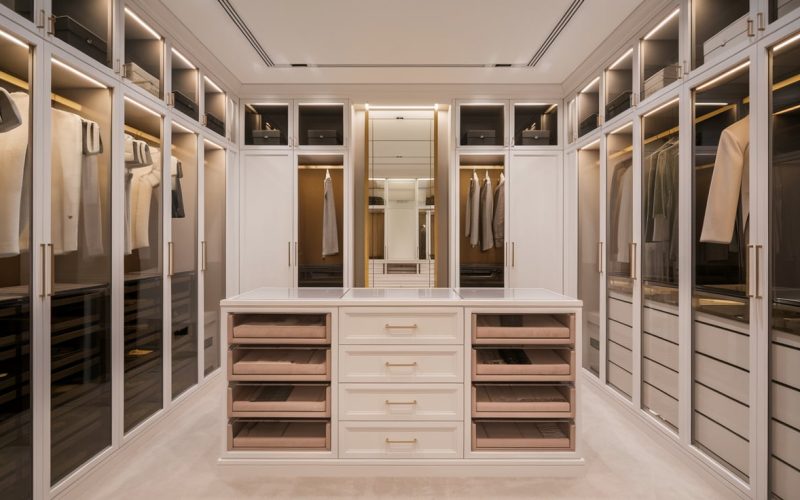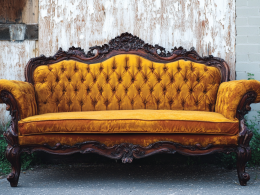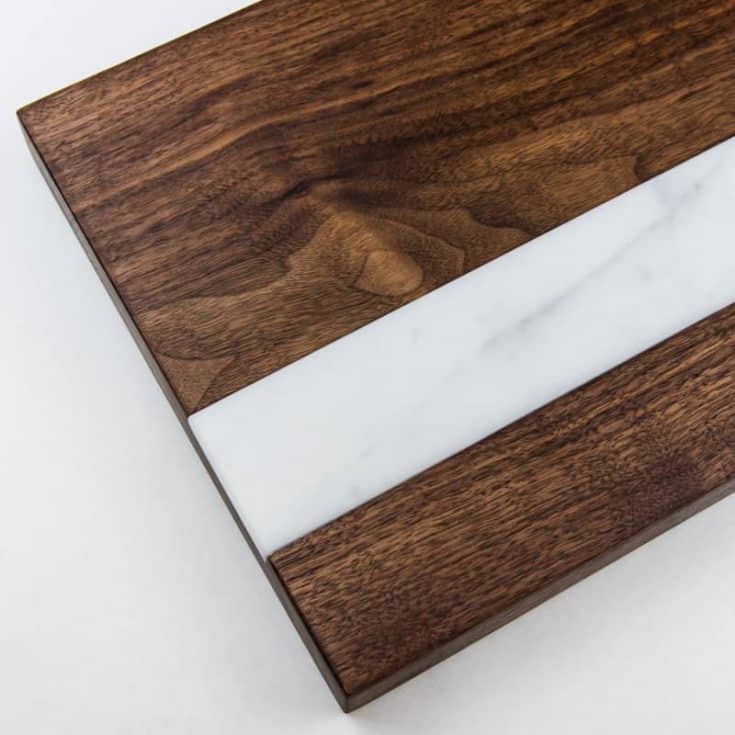Need more room but don’t want to move? Murphy beds might be your answer.
These fold-up beds hide away when not in use, giving you back your space.
There are many types to choose from, from vertical units to horizontal Murphy beds that work in rooms with low ceilings.
This guide covers everything you need to know, including different styles, standard sizes, design options, and setup tips.
We’ll help you compare costs, examine safety features, and even consider other options, such as sofa beds.
By the end, you’ll have all the facts to find the perfect Murphy bed for your home.
Types of Murphy Beds
Vertical vs. Horizontal Murphy Beds

Vertical Murphy beds fold up and down against the wall. They save the most floor space but need higher ceilings.
Horizontal beds fold sideways and work well under low ceilings or in narrow rooms.
Both types hide away when not in use, quickly turning bedrooms into work or play areas.
Side Tilt vs. End Tilt

Side-tilt Murphy beds fold from the long edge of the mattress. They need wider wall space but are often easier to open.
End-tilt models fold from the head or foot of the bed. They fit in tight spaces but may need more depth when open. Your room size helps decide which is best for you.
Freestanding vs. Wall-Mounted

Wall-mounted Murphy beds attach directly to wall studs for support. They stay fixed in one spot but take up less space.
Freestanding models don’t need wall support and can move to different rooms. They often include built-in shelves or desks but take up slightly more room even when closed.
Murphy Bed Sizes
Murphy beds come in standard sizes that fit different rooms.
Twin beds work in small spaces; full beds suite guest rooms and queen beds offer more comfort for daily use.
Most frames can hold mattresses up to 12 inches thick.
- Twin: 39″ × 75″ – Best for small rooms
- Full: 54″ × 75″ – Good for one adult
- Queen: 60″ × 80″ – Ideal for couples
Customization Options in Murphy Bed
Murphy Bed Finishes
Murphy beds come in various finishes to match your room. Wood grain gives a natural look, while matte finishes fight smudges.
Gloss finishes add shine to modern rooms. Color options range from white and black to blues and greens, helping your bed blend in or stand out.
Storage Add-ons: Shelves, Cabinets, Desks
Many Murphy beds include built-in storage to make rooms more useful.
Side shelves hold books or photos, cabinets keep blankets and clothes out of sight, and desk models turn into workspaces when the bed is up.
These extras help small rooms do more without taking up extra space.
Lighting and Hardware Features
Smart lighting can be added inside or around Murphy beds. LED strips light up when the bed is lowered.
USB ports and outlets let you charge phones nearby. Some beds have soft-close systems to stop slamming. Good hardware makes daily use smooth and safe for years.
Modern Vs. Traditional Styles
Modern Murphy beds have clean lines and simple forms with metal pulls. They are often white, gray, or black.
Traditional styles show more curves and details, often in wood tones. Some mix both styles with classic shapes in bold colors to suit many homes.
Design Ideas for Horizontal Murphy Beds

1. Media Center Integration
Add a TV mount and small shelves to the outside panel of your horizontal Murphy bed. When the bed is up, you have a full media center wall.
The TV stays in place even when you lower the bed, while the shelves can hold your remote, books, and decor items. This works great in studio apartments and bonus rooms.
2. Window Seat Combo
Place your horizontal Murphy bed under a window. When closed, add a padded bench top with storage space inside.
This gives you a cozy window seat during the day and pulls down into a bed at night.
Add wall sconces on both sides that work for both reading in bed and lighting the seating area.
3. Home Office Setup
Mount a desk to the front of your horizontal Murphy bed that stays level when the bed folds down.
Choose a desk that’s the same width as the bed but not too deep. When the bed is up, you have a full workspace.
At night, your work stays in place on the desk while you sleep on the now-lowered bed.
4. Hidden Bookshelf Design
Create pull-out or sliding bookshelves on both sides of your horizontal Murphy bed. These stay upright even when the bed is down.
The shelves can shift sideways to let the bed fold down, then slide back to frame it. This gives you storage that remains usable regardless of whether the bed is up or down.
5. Multi-Panel Art Display
Turn the bottom of your horizontal Murphy bed (the part you see when it’s closed) into a large art display.
Use a split canvas design or mount several framed pictures that create one scene. You could also use a wall decal or paint a mural.
This turns your bed into a focal point when not in use instead of just a blank wall.
How to Choose the Right Murphy Bed?
Pick a Murphy bed that fits your space and meets your needs for comfort and style.
1. Assessing Space
Measure your room’s width, length, and height before buying. Check for door swings, windows, and outlets.
Allow enough space for the bed when it’s down, plus room to walk around it. Consider ceiling height for vertical models.
2. Room Function
Think about how you use the room most days. Home offices need desk options, while guest rooms might work with simpler models.
Living rooms need beds that look like furniture when closed. Your main use guides your choice.
3. Budgeting Considerations
Murphy beds are available in many price ranges. Basic models cost less than custom ones with built-ins. DIY kits save money but require assembly time.
Remember to include shipping and installation in your budget. Quality hardware might cost more at first, but it can save money over time.
4. Safety and Mechanism Preferences
Look for beds with good weight ratings and solid warranties. Spring systems are common, but piston systems can be smoother.
Some models require less effort to open. For safety, check if the bed locks in both open and closed positions.
Murphy Bed Installation & Safety
Setting up your Murphy bed the right way keeps everyone safe and makes it last longer.
DIY Vs. Professional Installation
| DIY Installation | Professional Installation |
|---|---|
| Lower cost | Higher cost |
| Needs basic tools | Includes all tools |
| Takes 4-8 hours | Finished in 2-3 hours |
| It may have gaps in the finish | Cleaner look |
| Works for those with building skills | Best for heavy or complex units |
Anchoring and Safety Tips
Always attach Murphy beds to wall studs, not just drywall. Use the right bolts for your wall type.
Test the bed several times after setup to ensure smooth movement. Do not let children play on or around the bed.
Choose a model with a locking system to stop it from falling unexpectedly.
Maintenance Guidelines
- Check wall anchors and tighten screws every six months
- Clean tracks and moving parts to remove dust
- Apply light oil to hinges yearly
- Look for loose parts before and after each use
- Replace worn straps or springs right away
Murphy Bed Alternatives

Sofa beds
Sofa beds can be used as seating or sleeping spots. They cost less than Murphy beds and don’t need wall attachments.
Many have thin mattresses that might not feel great for nightly use. They take up floor space even when closed but add seating that Murphy beds don’t offer.
Daybeds
Daybeds look like sofas but use standard twin mattresses for better comfort. They can be used as beds at night and seating during the day.
Most come with storage drawers underneath. Daybeds always take up floor space but need no special setup and work well in kids’ rooms.
Trundle beds
Trundle beds hide a second mattress under the main bed. You pull out the lower bed when needed, then push it back when you’re done.
They work well for kids’ rooms and guest spaces. The lower bed sits close to the floor, which might not suit older guests.
Alternatives Vs. Murphy beds
| Feature | Murphy Beds | Alternatives |
|---|---|---|
| Floor space when not in use | Very little | More |
| Setup cost | Higher | Lower |
| Mattress quality | Better | Often worse |
| Installation | Complex | Simple |
| Best for | Daily use | Guests |
Final Tips Before You Buy
1. Checklist for Decision-Making
Measure your room twice, check the ceiling height, list how you’ll use the room, and think about who will sleep on the bed and how often.
Set a firm budget, and pick your must-have extras versus nice-to-have ones.
2. Questions to Ask Your Supplier
Ask about the full weight of the unit and what’s included in the price, and check delivery lead times.
Ask who fixes issues after setup. See if they offer help with installation or can suggest trusted pros.
3. Trial and Warranty Policies
Look for beds with good warranties on frames and parts. Ask about the return policy and any fees.
Check if there’s a trial period. Find out what voids the warranty. Make sure parts will be available if something breaks.
Wrapping Up
Murphy beds offer a smart solution for small spaces, and there are options like horizontal Murphy beds for rooms with height limits.
You now know about the various types, from wall-mounted to freestanding models.
You’ve learned how to pick the right size, style, and features for your needs.
When shopping, remember to measure twice, ask about warranties, and think about who will use the bed most.
Start your search by looking at local stores where you can test how the beds work. Take photos of your room to share with sellers.
Your perfect Murphy bed will turn any room into a multi-use space.

